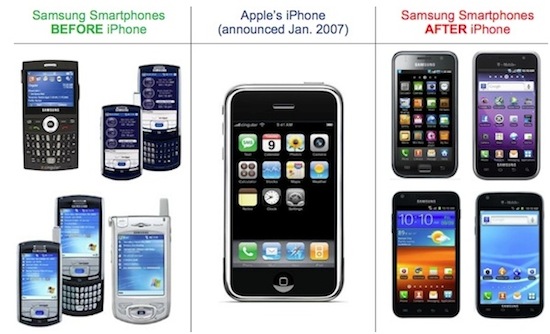The Apple/Samsung litigation has proven to be an Apple enthusiast’s dream. iPhone prototypes, iPad prototypes, and a plethora of fascinating information regarding Apple’s design process and previously undisclosed internal workings of the notoriously secretive company.
This past Friday was no different when Scott Forstall – Apple’s Senior VP of iOS Software – took the stand to testify.
During his examination, Forstall spoke at length about the development of the original iPhone and dropped a number of extremely fascinating tidbits.
“In 2003, we had built all these great Macs and laptops and we started asking ourselves what comes next. One thought we settled on was a tablet. We settled pretty quickly if we could investigate doing that with a touchscreen, so we started investigating and building prototypes.”
And then the talk turned to cellphones, a conversation prompted by a number of Apple executives’ displeasure with their current devices.
“In 2004, I remember sitting with Steve and saying we all hated our cell phones,” Forstall recalled. “We were asking ourselves: could we use the technology we were using with touch and use that same technology for phone. Something that would fit in your pocket.”
Forstall continued:
I’ll never forget we took that tablet and built a small scrolling list. On the tablet, we were doing pinch and zoom. So we built a small list to scroll on contacts and then you could tap on it to call. We realized that a touchscreen that was the size that would fit in your pocket would be perfect for the phone. So in 2004, we switched over from developing a tablet to developing the iPhone.
And so the first plans to hatch the iPhone were born. Jobs then approached Forstall about designing a mobile OS for the device, giving him free reign to handle the software aspect of iPhone development, albeit with one major caveat – Forstall could take anyone from within Apple he wanted, but he was not to hire anyone from outside the company.
So armed with that constraint, Forstall went on to approach all the superstars he could find at Apple whereupon he would deliver a cryptic offer.
“That was quite a challenge,” Forstall explained. “What I did was find people who were true superstars of the company, amazing engineers, bring them into my office and say, ‘you’re a superstar in your current role. I have an other offer, another option. We’re starting a new project. It’s so secret I can’t tell you what that project is. I can’t tell you who you will work for. What I can tell you is if you chose this new role, you’re going to work hard, give up nights, work weekends for years.”
“We wanted to build a phone for ourselves, “Forstall continued. “A phone that we really love. A computer in your pocket. We wanted to bring out something great without anyone else finding out what we’re doing so they wouldn’t leak it.”
As far as working conditions go, Forstall described how the orginal iOS team worked in a locked down floor in a building on Apple’s campus, complete with security readers and video cameras to monitor activity. The iPhone project was given the code name Purple, so the building was henceforth called the “purple dorm.”
Continue Reading






Wed, Aug 8, 2012
Comments Off on Despite tight component supply, Apple expected to meet demand for iPhone 5